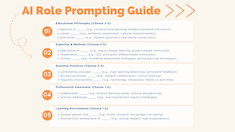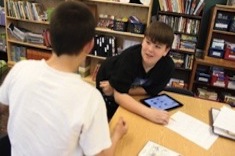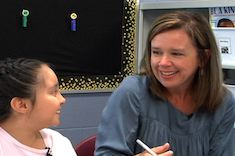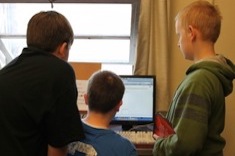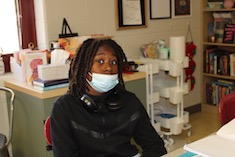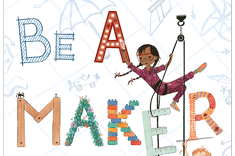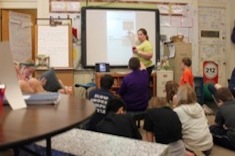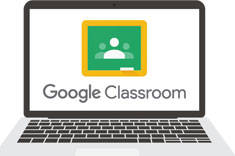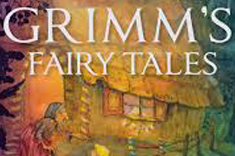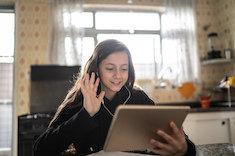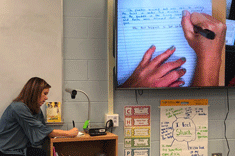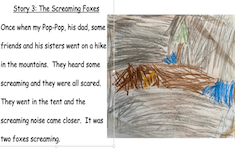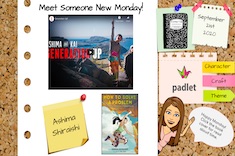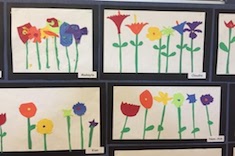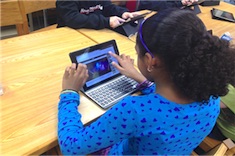Digital Literacy
Thoreau once wrote we are in danger of becoming the "tool of our tools," but it's doubtful he envisioned a day when there would be so much technology hardware and software to distract and empower us at the same time. Teachers who are grappling with iPads, laptops, kid blogs and cellphones in classrooms share their triumphs and struggles here.
Latest Content
Beyond “I’m a Third-Grade Teacher”: The Power of Role-Specific Prompting in Educational AI
Brian Sepe helps us understand the importance of prompting and offers a framework that will help us be more intentional and specific to leverage AI for our needs.
Can AI Help with Assessment?
Tara Barnett and Kate Mills explore using AI to help with grading student writing. In this practical and insightful article, they share a process for using AI as a co-teacher and their reflection on whether it helped them save time (nope) and made their feedback more useful (yep). They share a downloadable student literary essay reflection sheet that you might want to use in your classroom, too.
Five Things I’ve Used AI for This Week
From lesson planning to generating decodable texts, Dana Murphy shares five ways she uses AI as a reading interventionist.
Considerations for AI in the Classroom
Julie Cox wrestles with the use of AI to support high school writers. In this article she offers filters for educators to determine the role of AI in their classrooms.
Considerations for AI in the Classroom
Gretchen Schroeder considers the positive ways AI will influence her high school English classroom.
Leveraging AI in Elementary Literacy
David Pittman offers practical and time-saving tips for using AI to help make instructional plans. Need a rubric or discussion questions? David shows how using AI offers a springboard for creating tools for elementary literacy instruction.
Getting to Know Digital Learners: How Playing with Technology Helps Facilitate Our Identities as Learners
As teachers we do many things to get to know our students as readers and writers and mathematicians. Josie Stewart and Hannah Tills lead us to consider how to get to know our students as digital learners.
Picture of the Week
Bitsy Parks shares a Picture of the Week routine that builds real-life literacy skills, and documents and celebrates important moments throughout the school year.
Using Digital Photos to Enhance Learning
Stella Villalba uses photos in the classroom as a powerful tool for critical thinking and reflection. Photos allow students to process complex learning as it happens.
The Answer Is Always “Yes”
Julie Johnson shows how saying yes empowers students to do the work of writers: make decisions, experiment, build relationships, and be confident as a writer.
Hanging Out, Messing Around, Geeking Out (or, how to give students the resources, space, and time for self-directed literacy learning)
Matt Renwick challenges educators that if we believe that social and emotional learning is just as important as academics, then we ought to use resources, space, and time to support self-directed learning.
Lead with Art, and Literacy Will Naturally Follow
Stella Villalba widens our perspective by sharing the link between art and literacy with suggested picture books to help build the bridge.
Minilessons About Sound and Image
Julie Johnson encourages minilessons about sound and image to give students more ways to create meaningful texts.
Teaching Students How to Email
Katherine Sokolowski outlines the nitty-gritty on how to teach students to organize, manage, and compose email.
Google Classroom Boot Camp
Katherine Sokolowski takes time each year to help students know how Google Classroom works and details ways to take advantage of it as an organizational tool.
Four Tools for Hosting Online Book Clubs
Matt Renwick leads us to design book clubs where students can continue to grow and connect as readers in online discussions.
Finding Reliable Digital Reading Resources
Cathy Mere shares how to find reliable digital reading resources to pair with print materials to provide strong opportunities for student learning.
Fairy Tales with a Multimodal Twist: Process and Product
In this second installment, Julie Johnson guides the process of creating multimodal fairy tales, as well as discusses producing the final product.
Fairy Tales with a Multimodal Twist: Laying the Groundwork
Julie Johnson outlines the groundwork for creating multimodal fairy tales in writing workshop.
Student-Centered Learning Through Video Lessons
Tara Barnett and Kate Mills consider the power of asynchronous lessons in creating a student-centered learning environment.
COVID Silver Linings: Positive Changes in Teaching Practices
Dana Murphy outlines the teaching practices that she learned from remote teaching and plans to carry with her upon returning to a physical classroom.
Tips for Creating Shared-Writing Texts Online
Tammy Mulligan offers tips for creating shared-writing texts online.
Digital Reading Strategies
Mandy Robek reflects on her identity as a digital and print reader and offers strategies to support students reading digital texts.
Online Routines to Create Energetic Reading Communities
Melissa Quimby shares online routines to strengthen the class reading community.
Planting Rainbows
Bitsy Parks shares how she adapts her favorite first-grade spring literacy project for remote learning.
The Good Part of Tech
Bitsy Parks shares how she integrates technology into her workshops with first graders in a way that is simple, effective, and natural.
Picture Books to Teach Digital Citizenship
Students aren’t just collaborative in our classrooms—they are connecting with others all over the world. Stephanie Affinito shares her favorite picture books to teach digital citizenship.
The Basics of Teaching Internet Search Skills to Children
Bill Bass provides a range of search options for students, and encourages teachers to promote different tools in different contexts.
Digital Revision: Conferring with Aidan
In this week’s video, Gigi McAllister helps fourth grader Aidan revise his writing on the computer to flesh out character development.
Video Games and Literacy
Matt Renwick finds there is value in connecting video games and literacy in classrooms, once he and the teachers he works with can get past their leeriness.
Browse Content By
Type
Category
- Assessment Tools
- Big Fresh Archives
- Booklists
- Choice Numeracy
- Classroom Design
- Common Core
- Community Building
- Conferring
- Content Literacy
- Digital Literacy
- English Language Learners
- Equity
- Family Relations
- Free Samples
- Guiding Groups
- Leadership
- Literacy Coaches
- Mentor Texts
- Minilessons
- New Teacher Mentors
- Podcasts
- Poetry
- Quote Collections
- Reading Strategies
- Self Care
- Struggling and Striving Learners
- Talking and Listening
- Teacher Study Groups
- Teaching Reading
- Teaching Writing
- Word Study and Vocabulary
Author
- Melissa Quimby
- Nawal Qarooni
- Gwen Blumberg
- Julie Cox
- The Lead Learners
- Hannah Tills
- Josie Stewart
- Ruth Metcalfe
- Mallory Messenger
- Becca Burk
- Jodie Bailey
- Vivian Chen
- Mary Brower
- Tiffany Abbott Fuller
- Stephanie Affinito
- Ruth Ayres
- Leigh Anne Eck
- Heather Fisher
- Shari Frost
- Julie Johnson
- Suzy Kaback
- Gigi McAllister
- Shirl McPhillips
- Melanie Meehan
- Cathy Mere
- Debbie Miller
- Tara Barnett and Kate Mills
- Tammy Mulligan
- Dana Murphy
- Bitsy Parks
- David Pittman
- Brenda Power
- Heather Rader
- Matt Renwick
- Mandy Robek
- Christy Rush-Levine
- Gretchen Schroeder
- Jen Schwanke
- Brian Sepe
- Katherine Sokolowski
- Stella Villalba
- Jennifer Vincent
Grade Level
Choice Literacy Membership
Articles
Get full access to all Choice Literacy article content
Videos
Get full access to all Choice Literacy video content
Courses
Access Choice Literacy course curriculum and training

